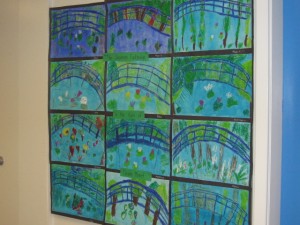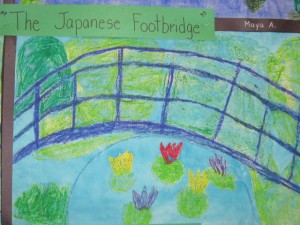For our Art programme this year we have been studying the elements of art. We are currently exploring ‘value’. Students have learned that value refers to the varying degrees of ‘lightness’ and/or ‘darkness’ an object possesses. We began by choosing coloured construction paper and using a piece of white chalk and a black wax crayon to experiment with differing pressures to show the different values on the paper.
Students then used a piece of white paper and a black wax crayon to create a picture of their choice. The criteria was that they needed to show different levels of value – some parts of their pictures were lighter or darker than other parts. This resulted in a quite dramatic effect in their work.
Hopefully you will get a change to come by and check out the two bulletin boards outside of our classroom. They create quite a contrast between the colourful Monets and the monochromatic ‘black and white’ pictures.





